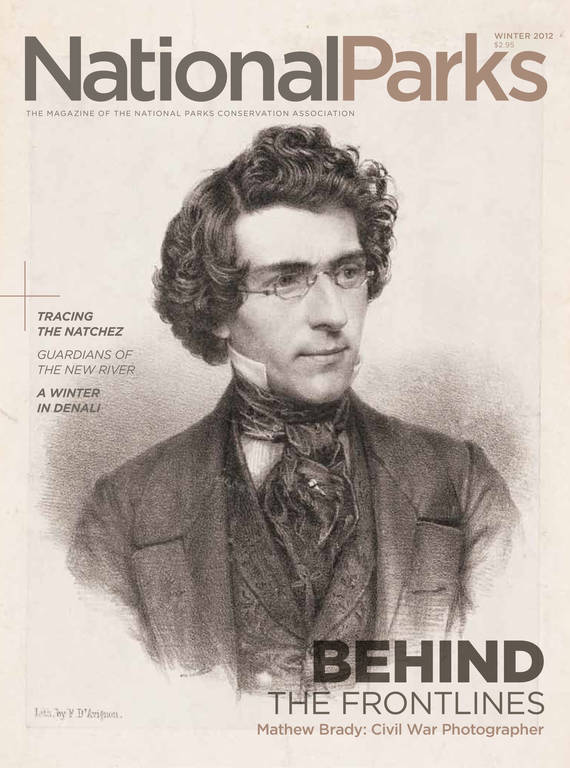Winter 2012
Maiden Voyage
Do archaeological sites in the Channel Islands reveal a coastal migration into the Americas?
Millennia before American pioneers charged westward in search of land and fortune, humans pursued a different version of manifest destiny. Driven by changes in the environment or growing populations, and perhaps a basic human urge to explore, they weathered the frigid Siberian Arctic, wending through what is now the Bering Strait into North America. By at least 14,000 years ago, early settlers had spread through the continent and parts of South America.
Just how humans first entered the New World is still actively debated. For decades, the dominant theory described a migration from Siberia through a land-locked, ice-free corridor into Canada. These days, consensus is growing for an alternative “coastal migration theory,” where people followed the Pacific Coast from Asia to the Americas when the inland route was still covered by glaciers. The idea gained traction in 1997, after a pivotal find in Monte Verde, Chile, revealed signs of human occupation dating back 14,000 years. Recent discoveries within California’s Channel Islands National Park have bolstered the coastal migration theory, revealing that seafaring peoples settled the islands at least 13,000 years ago, hunting seals, fishing, and collecting shellfish and seaweeds.
Located roughly 20 miles off the coast of Santa Barbara, the Channel Islands are an archaeologist’s dream. Unlike the mainland, these sites aren’t threatened by destructive development or burrowing animals notorious for digging up the past. Instead, the park’s remaining archaeological sites are fairly pristine, like “a prehistoric layer cake” packed with information, according to Torben Rick, curator of North American Archaeology at the Smithsonian Institution.
In 1999, news broke that human remains recovered from Santa Rosa Island four decades earlier had been radio-carbon-dated to about 13,000 years ago, some of the oldest human bones in North America. Their presence on Santa Rosa supported a coastal migration, according to John Johnson, the archaeologist who dated them. Yet with the absence of tools and other tell-tale artifacts, it wasn’t clear who these people were.
Jon Erlandson, director of the University of Oregon’s Museum of Natural and Cultural History, has studied the earliest sites in the area for decades. Erlandson and Rick recently shined light on early Channel Islands life through discoveries of their own. On Santa Rosa Island, the duo hit a jackpot—by accident. “We were literally on a walk in the park,” says Erlandson, when an eroded area caught his eye, and he walked over to get a closer look. “It was full of bird bones and stone tools,” he says, “so we knew this site need some serious work.” They were right. Further investigation revealed a treasure trove of deeply buried artifacts and animal bones eroding from the sea cliff—items that dated about 11,800 years old.
With logistical support from Channel Islands National Park and funding from the National Science Foundation, they worked with graduate students and other colleagues to excavate thousands of bone fragments from fish, geese, seabirds, and marine mammals. They also found dozens of small barbed points, probably used to spear sea life, crescents to hunt birds, and other tools fashioned mostly from local island cherts, a flint-like rock. Well suited to marine environments, these are more similar to tools recovered in Northeast Asia and the Pacific Northwest than ones found in North America’s interior.

National Parks
You can read this and other stories about history, nature, culture, art, conservation, travel, science and more in National Parks magazine. Your tax-deductible membership donation of $25 or more entitles…
See more ›Excavations on neighboring San Miguel Island unearthed more clues to the past. In addition to tools, the team found shell mounds, which suggested that early settlers feasted on mussels, red abalone, crabs, and other shellfish. “The sites complement each other nicely,” says Erlandson. Collectively, their artifacts date back between about 11,400 and 12,200 years ago and paint a picture of people who were probably more than just passers-by. They likely used Santa Rosa’s hunting site during the winter, when migratory birds such as geese would have been abundant. Erlandson says it’s not clear when they collected shellfish on San Miguel, but it was probably primarily during the summer and fall.
“These are people who were familiar with their island environment and knew what they were doing,” says Rick. More permanent villages may have existed closer to the ancient coastline, which has since been swallowed by rising post-glacial seas (four of the five park islands were once melded as one, until rising ocean waters separated them). These pioneers were probably “living the good life by the sea,” says Erlandson. “These may have been glory days, when resources were truly abundant and the islands and adjacent mainland were relatively uncrowded.”
Erlandson and Rick’s recent finds aren’t old enough to confirm a coastal migration, but they do show that early humans occupied the Pacific Coast around the same time that other humans roamed North America’s interior. Perhaps the most definitive lesson that these park findings convey, however, is that “the peopling of the Americas is a lot more complex than we thought it was a decade ago,” says Erlandson. “The holy grail would be to find a 15,000-year-old site,” one that predates older human settlements such as at Monte Verde in Chile. With the park only 40 percent surveyed—and offshore waters still largely unexplored—there may be a lot left to discover.



